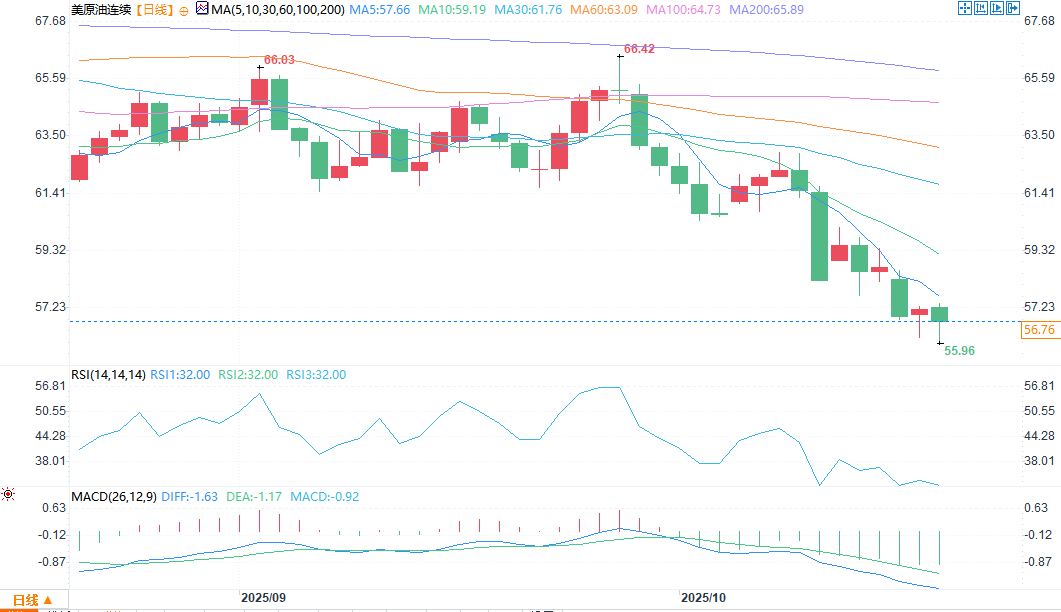Risk premium begins to decline, crude oil prices may fall another 15% by the end of the year
2025-10-21 01:09:03

Baker Hughes reported last Friday that the number of operating oil rigs in the United States is now 418, the same as a week ago. This figure breaks the recovery trend that began in August. However, the United States is continuously improving production efficiency, and the amount of crude oil produced per well has increased.
Bloomberg pointed out that current offshore crude oil inventories have reached nearly 1.2 billion barrels, a new high since the peak in 2020. In 2020, US oil production was at a historical high, and Saudi Arabia and Russia were competing for market share and touting their respective production capacity potential.
The current situation is highly similar to that of more than five years ago. The latest weekly data shows that US crude oil production has hit a record high of 13.64 million barrels per day.
Inventory data is one of the factors stabilizing current oil prices. US commercial crude oil inventories are at the lower end of their decade-long range, but similar levels were seen in January 2020, only to reach a record high just six months later. However, such rapid inventory growth is not expected without a significant contraction in consumption. Furthermore, the US government may take more aggressive action to replenish the Strategic Petroleum Reserve (SPR) sold in 2022.
Oil prices have been in a downward trend for over three years. At the end of September, the decline accelerated as prices approached the 50-week moving average and the upper limit of the range. Currently, the lower limit of this range for Brent crude oil is near $53 per barrel. At the current price of $61 per barrel, oil prices could fall to around $50.50 per barrel by the end of the year.

(WTI crude oil daily chart source: Yihuitong)
Over the next two to four months, oil prices are expected to fall to around $50 per barrel. Meanwhile, the potential for growth in US crude oil inventories is a potential stabilizing factor. Aside from the excess offshore crude oil inventories, inventory levels in other parts of the world are roughly similar to those in the US.
- Risk Warning and Disclaimer
- The market involves risk, and trading may not be suitable for all investors. This article is for reference only and does not constitute personal investment advice, nor does it take into account certain users’ specific investment objectives, financial situation, or other needs. Any investment decisions made based on this information are at your own risk.





















